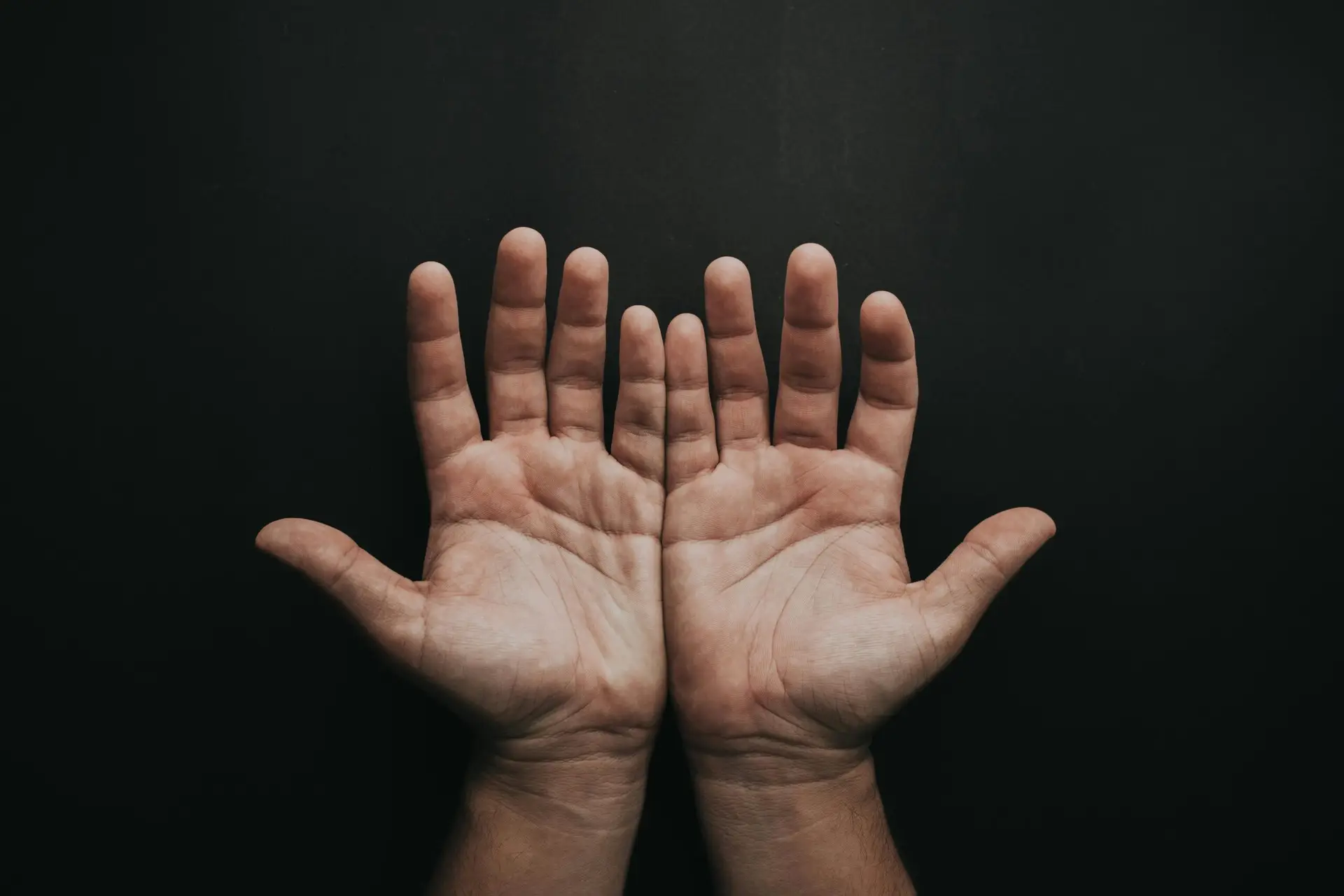
Carpal Tunnel, Numb Hands: If your hands keep falling asleep on the drive down I-75, if typing sets your fingers on fire, or if buttoning a shirt feels clumsy and slow—you’re not alone. Carpal tunnel syndrome, neuropathy, and numb hands are common complaints for residents across Sarasota and Manatee County. But here’s the part many people never hear: wrist symptoms aren’t always just a wrist problem. For a surprising number of patients we see at Lavender Family Chiropractic in Sarasota, the true “bottleneck” sits higher up—often at the top of the spine—where a gentle, precise upper cervical correction can change the way your entire nervous system communicates.
In this in-depth guide, you’ll learn how to tell the difference between true carpal tunnel and nerve problems that mimic carpal tunnel, why numbness often returns after braces, injections, or surgery, and how specialized upper cervical chiropractic care can help your body resolve the root drivers—naturally, without popping, twisting, or cracking.
Whether you’re searching for a “numb hands doctor Sarasota Florida,” relief from carpal tunnel that keeps coming back, or answers about peripheral neuropathy in the hands, consider this your roadmap to lasting relief.
What You’re Feeling: Carpal Tunnel, Neuropathy, or Something Else?
Carpal Tunnel Syndrome (CTS) happens when the median nerve gets compressed as it passes through a narrow channel in the wrist (the “carpal tunnel”). Classic symptoms include:
- Numbness, tingling, or burning in the thumb, index, middle, and part of the ring finger
- Nighttime waking with “dead hands” you need to shake out
- Pain that may travel up the forearm
- Grip weakness or frequent dropping of objects
Peripheral Neuropathy is a broader category that means nerves are damaged or not communicating well. Neuropathy can come from multiple causes—metabolic, inflammatory, toxic, or mechanical. Symptoms can include:
- Diffuse numbness or tingling in multiple fingers or both hands
- Burning, “pins and needles,” or electric-like sensations
- Temperature sensitivity or allodynia (pain from a light touch)
- Symptoms that vary with posture, neck position, or stress
Other Nerve Entrapments can look like CTS but aren’t. These include:
- Cervical radiculopathy (nerve root irritation in the neck, often C6–C8)
- Thoracic outlet syndrome (compression around the scalene muscles or first rib)
- Pronator syndrome (median nerve entrapment in the forearm)
- Ulnar neuropathy (numbness in ring and little finger—often misidentified as CTS)
A lot of people get wrist braces, shots, or even carpal tunnel surgery, only to find the numbness returns. Why? Because the wrist wasn’t the only pinch point. This brings us to one of the most important (and under-discussed) patterns we see:
The “Double Crush” Pattern: Why Symptoms Come Back
The nervous system is like a highway from your brain to your fingertips. If there’s a lane closure anywhere along the route, traffic slows down. If there are two choke points—say, one at the neck and one at the wrist—even mild pressure at each can add up to major symptoms. This is called Double Crush Syndrome. Common combinations include:
- Mild cervical nerve root irritation + mild wrist tunnel pressure
- Tight scalenes or elevated first rib (thoracic outlet) + forearm entrapment
- Forward-head posture (which increases neural tension) + repetitive wrist strain
In Double Crush, treating only the wrist may reduce symptoms temporarily, but they tend to return because the other choke point remains. That’s why a top-down view—starting at the upper cervical spine—can be a revelation.
Upper Cervical 101: Why the Top of Your Neck Matters for Your Hands
The upper cervical spine—specifically the atlas (C1) and axis (C2)—sits right under the skull and protects the brainstem. This area is the control tower for how your body balances, heals, and coordinates muscle tone. Even a small misalignment here can create a cascade of compensations down the chain:
- Changes in head and neck posture, increasing tension on the spinal cord and nerve roots
- Altered firing of postural muscles (scalenes, pec minor, upper trap), which can tighten the thoracic outlet
- Asymmetrical shoulder girdle mechanics and first rib position
- Increased neural tension along the brachial plexus and into the forearm and wrist
When we restore normal alignment and motion at the top of the neck with a gentle, precise correction, we often see the “cascade” unwind—posture normalizes, muscle tone balances, and nerve irritation calms. This is why patients with hand symptoms frequently notice improvements above and beyond what they experienced with wrist-only care.
What Makes Lavender Family Chiropractic Different
At Lavender Family Chiropractic in Sarasota (serving Manatee and surrounding communities), our three-doctor team—Dr. Rusty Lavender, Dr. Jacob Temple, and Dr. Will Guzinski—focuses on upper cervical chiropractic with an emphasis on precision and gentleness.
Here’s what that looks like:
- 3D CBCT Imaging (Cone Beam CT): We use state-of-the-art 3D imaging to see the exact orientation of your atlas and axis. This is not a generic “one-size-fits-all” adjustment; it’s a customized blueprint for your anatomy.
- Functional Nervous System Scans (Tytron): Paraspinal infrared thermography helps us assess how your nervous system is regulating. It’s like a window into autonomic balance and inflammation patterns.
- Gentle, Precise Adjustments—No Popping or Twisting: Using advanced knee-chest upper cervical protocols (AHKC), we deliver a targeted correction that’s comfortable and specific. Many patients are surprised by how subtle the adjustment feels—and how profound the results can be.
- Objective Pre- and Post-Checks: We often re-scan and reassess to confirm the effect of the correction. When the nervous system settles, patients usually feel it: deep breathing, warmth in the hands, clarity, and a sense of ease.
- Whole-Person Care: We review your ergonomics, movement patterns, sleep position, and daily habits that can keep nerves cranky—and give you a tailored plan to help improvements “stick.”
How Upper Cervical Care Can Improve Carpal Tunnel–Like Symptoms
Let’s connect the dots in plain English:
- Relieves Central Irritation
If the neck is slightly off, the brainstem and upper spinal cord can become irritated. That often shows up as muscle guarding around the shoulders and neck that tugs on the brachial plexus. A precise atlas correction can quiet that irritation, decreasing the “background noise” your wrist has been fighting. - Restores Postural Balance
Forward head posture increases tension on the spinal cord and median nerve pathway. Correcting the upper neck helps your head balance over your shoulders again, reducing neural tension from the top down. - De-Tensions the Thoracic Outlet
When scalenes and pec minor relax after a good upper cervical correction, the brachial plexus has more space. Many patients notice their hands feel warmer and less tingly—sometimes right on the table. - Improves Nerve Conduction and Blood Flow
With less compression and better alignment, the “signal quality” along the nerve improves. Think of it like removing static from a radio channel. - Helps Wrist Interventions Work Better
If you do need local wrist support (like brief bracing or focused soft tissue), doing it in the context of a balanced neck and shoulder system makes it far more effective—and often shorter-lived.
Our Step-by-Step Process for Numb Hands, Carpal Tunnel, and Neuropathy
Step 1: Discovery Consultation
We listen—deeply. When did symptoms start? Do they vary with neck position? What jobs, sports, or hobbies stress your hands? Do you wake with numbness? What’s your sleep posture? Clues often appear in the story.
Step 2: Functional Nervous System Assessment (Tytron)
We perform non-invasive thermography to map patterns of dysregulation along your spine. Hot and cold “stripes” can indicate levels of irritation and guide us to the likely source.
Step 3: Precise Structural Imaging (3D CBCT)
We capture a 3D view of your upper cervical spine to measure any misalignment to fractions of a degree. This is the GPS for your correction.
Step 4: Gentle, Targeted Upper Cervical Correction
Using a specialized knee-chest table, your doctor delivers a precise, comfortable correction tailored to your scan and CBCT findings. No twisting. No cracking. The realignment is like no other.
Step 5: Post-Correction Checks
We re-assess, often repeating thermography or other checks to confirm that your nervous system has responded. Patients frequently report immediate changes—warmth, ease, and softer muscle tone.
Step 6: Stabilize and Strengthen
As your alignment stabilizes, we layer in simple, targeted strategies—ergonomic tweaks, microbreaks, sleep position coaching, gentle nerve mobility (when appropriate), and hydration/mineral support—so improvements hold.
Step 7: Progress Reviews
We track your symptoms, function, and objective findings. The goal is clear: fewer episodes, less intensity, more confidence in your hands.
When It’s the Wrist—And When It’s Not
We’re not here to pretend that no one has true carpal tunnel. Of course they do. But many “carpal tunnel” cases are actually:
- Neck-driven (cervical radiculopathy): Symptoms may change when you look down at your phone or turn your head.
- Thoracic outlet–driven: Numbness flares with overhead work or backpack straps.
- Ulnar nerve–driven: Tingling is more in the ring and little finger, worse with elbow flexion (phone in bed or driving).
- Forearm entrapment (pronator syndrome): Median nerve irritation higher up, mimicking CTS.
Upper cervical care doesn’t replace a thorough orthopedic or neurological assessment—it enhances it. By restoring top-down alignment and calming neural irritability, we can often clarify what is (and isn’t) a wrist problem and spare patients from chasing the wrong fix.
Natural Strategies That Support Your Results
These are not prescriptions; they’re common-sense habits that often make a real difference—especially once your upper neck is balanced and your body is ready to heal.
- Microbreaks > Marathons: Every 20–30 minutes of typing, pause for 30–60 seconds. Shake out your hands. Roll your shoulders. Look far away to relax eye-neck tension.
- Neutral Wrist at Night: If nighttime numbness wakes you, a soft, neutral wrist brace for a short period can help—but it should not be forever if the root cause is addressed.
- Stacks, Not Slumps: Keep screens at eye height. Stack your head over your shoulders, shoulders over hips.
- Breathe Wide: Diaphragmatic breathing reduces upper-chest tone, easing the thoracic outlet.
- Gentle Nerve Mobility (When Appropriate): Median nerve glides, taught properly, can be helpful; do these only after your doctor confirms they’re right for you.
- Hydrate & Nourish: Nerves love hydration and steady micronutrients. If you’ve been told you’re low in B-vitamins (like B12), talk with your provider about a personalized plan.
Why Choose Lavender Family Chiropractic in Sarasota & Manatee
- Upper Cervical Specialists: Not all chiropractic is the same. Our advanced knee-chest upper cervical approach focuses on the exact area that can change everything downstream.
- Technology That Matters: 3D CBCT and Tytron thermography let us measure, not guess.
- Gentle + Precise: Corrections are comfortable, specific, and designed to hold—so your body does the healing.
- Three-Doctor Team: Dr. Rusty Lavender, Dr. Jacob Temple, and Dr. Will Guzinski collaborate on tough cases—so you get multiple expert eyes on your case.
- Community-Trusted: 120+ five-star reviews and growing—real stories from people just like you in Sarasota, Lakewood Ranch, and Bradenton.
- Convenient Location & Hours: Near University Parkway and minutes from UTC Mall, easily accessible from Sarasota and Manatee.
Address: 5899 Whitfield Ave, Ste 107, Sarasota, FL 34243
Website: www.chiropractorsarasotaflorida.com
Call/Text: (941) 243-3729
Who We Help (Beyond the Wrist)
While this article focuses on numb hands, carpal tunnel, and neuropathy, our upper cervical approach also helps people with headaches, migraines, TMJ, neck pain, vertigo/dizziness, balance issues, post-concussion symptoms, and more. If your nervous system is yelling, there’s a good chance the message is coming from above—at the upper neck.
Real-World Stories (Names Changed for Privacy)
- “I thought I needed surgery.” Maria, a graphic designer from Lakewood Ranch, had night-waking hand numbness for years. Wrist braces helped—until they didn’t. After her atlas correction stabilized, the nighttime waking stopped within two weeks. She still uses short microbreaks, but her hands no longer dictate her day.
- “It wasn’t my wrist at all.” Greg, a contractor from Bradenton, had tingling in his ring and little fingers—labeled “carpal tunnel.” Our exam pointed to the neck and ulnar nerve. Post-correction, his grip returned and overhead work stopped flaring symptoms.
- “I didn’t realize my posture was part of it.” Elaine, a retiree who loves painting around Siesta Key, noticed shoulder tightness melt after her first correction. The warmth in her hands returning was her “green light” that nerves were finally happy.
Results vary, but the common thread is this: when you address the root, the body does what it was designed to do—heal.
Top 15 FAQs: Carpal Tunnel, Neuropathy & Numb Hands — Answered
1) How do I know if it’s really carpal tunnel?
Classic CTS affects the thumb, index, middle, and part of the ring finger—often worse at night. If your ring and little finger are involved, or turning your head changes your symptoms, the neck or ulnar nerve might be the culprit. A thorough exam helps confirm.
2) Can upper cervical care help if I’ve already had carpal tunnel surgery?
Yes—if a second “crush” is higher up, you may still have symptoms post-surgery. Correcting upper cervical misalignment can reduce neural tension from the top, improving outcomes even after local procedures.
3) Is your adjustment safe and will it hurt?
Our upper cervical corrections are gentle and precise—no popping, twisting, or cracking. Most patients describe the adjustment as surprisingly light and comfortable.
4) How long until I notice improvement?
Some feel changes immediately (warmth, less tingling), while others improve steadily over several weeks as the correction holds and tissue calms. Your case history and severity determine the timeline.
5) Do you take X-rays?
We use 3D CBCT when clinically indicated to precisely measure your atlas/axis alignment. It’s part of creating a specific plan tailored to you.
6) What is the Tytron scan you mentioned?
It’s a non-invasive paraspinal infrared thermography scan that shows temperature asymmetries along the spine, often correlating with autonomic nerve irritation. It helps guide timing and need for corrections.
7) Will I need to come forever?
Our aim is to correct and stabilize. Early visits may be closer together; as your alignment holds, visits are spaced out. Many patients choose periodic wellness check-ins because they like how they feel and function.
8) Can upper cervical care fix neuropathy caused by diabetes or chemo?
If neuropathy stems from systemic issues, upper cervical care won’t “cure” the cause—but by improving nervous system regulation and reducing mechanical tension, many patients report better comfort and function. We’ll always coordinate care and set realistic goals.
9) Do you adjust the wrist or elbow too?
We prioritize top-down corrections. If the wrist or elbow needs gentle local care after the neck stabilizes, we’ll incorporate it strategically—never as a substitute for correcting the root.
10) What if my symptoms switch sides or move around?
That can be a sign of neural irritability upstream. As your system calms, symptoms typically centralize (become more localized) and then fade.
11) Can posture alone cause hand numbness?
Posture rarely acts alone, but forward head posture and rounded shoulders increase neural tension. Correcting upper cervical alignment makes good posture easier—and sustainable.
12) Do I need an MRI or nerve conduction study?
Sometimes. If red flags, severe weakness, or unclear patterns exist, we may recommend co-management. We’ll guide you based on your findings.
13) How is Lavender Family Chiropractic different from a general chiropractor?
We focus on upper cervical—micro-measurements, 3D imaging, Tytron scans, and gentle knee-chest corrections designed to hold. It’s precision care built for complex, nerve-driven problems.
14) Are there exercises I should do?
We’ll personalize this. Often we start with breath work, microbreaks, and positions of relief. Later, nerve mobility or specific strengthening can be layered once the top-down irritation settles.
15) Do you work with other providers?
Absolutely. We regularly coordinate with primary care, orthopedics, neurology, physical therapy, and hand specialists when needed. Your health team should function as a team.
Insurance Note: Our office is out of network with insurance. Many of our patients receive a superbill to submit to their insurance for reimbursement based on their coverage. We offer many different payment options as well as finance options.
Your Next Step: A Complimentary Consultation
If you’re searching “numb hands doctor Sarasota Florida,” “carpal tunnel Sarasota,” or “neuropathy treatment near me” and want a natural path that addresses the root, we’d love to meet you. Let’s find out whether your wrist is the whole story—or if your upper neck is quietly calling the shots.
Lavender Family Chiropractic
5899 Whitfield Ave, Ste 107, Sarasota, FL 34243
Call/Text: (941) 243-3729
Website: www.chiropractorsarasotaflorida.com
We serve Sarasota, Bradenton, Lakewood Ranch, Parrish, Ellenton, Venice, Osprey, Punta Gorda, St. Petersburg, Siesta Key, Longboat Key, Lido Key, and Myakka City.
Local SEO Corner (for readers who found us while searching):
If you typed any of these into Google, you’re in the right place: chiropractor sarasota florida, chiropractor near me, upper cervical chiropractor near me, upper cervical chiropractic, numb hands doctor sarasota, carpal tunnel sarasota, neuropathy doctor sarasota. Our gentle, precise care helps people across Sarasota and Manatee get back to the things they love—typing without tingling, sleeping through the night, and gripping life with confidence.
Final Encouragement
You don’t have to learn to “live with” numbness, tingling, and weak hands. Your body is designed to heal. When we remove the right interference—in the right place—the nervous system often responds faster than you think. If you’ve been chasing your wrist for months or years, consider a fresh perspective from the top. We’re here to help.
Lavender Family Chiropractic in Sarasota Florida offers complimentary consultations to learn more about you. Click the link below!
https://intake.chirohd.com/new-patient-scheduling/724/lavender-family-chiropractic
Visit our Website!
To learn more about us go to http://www.chiropractorsarasotaflorida.com
We also service Bradenton, Parrish, Ellenton, Ruskin, Venice, Tampa, St. Pete, Osprey, Longboat, Lakewood Ranch, Myakka City.
If you are not local, visit www.uccnearme.com to find a doctor in your area.
Ready to get started? Call or text (941) 243-3729 or visit www.chiropractorsarasotaflorida.com to schedule your complimentary consultation today.



